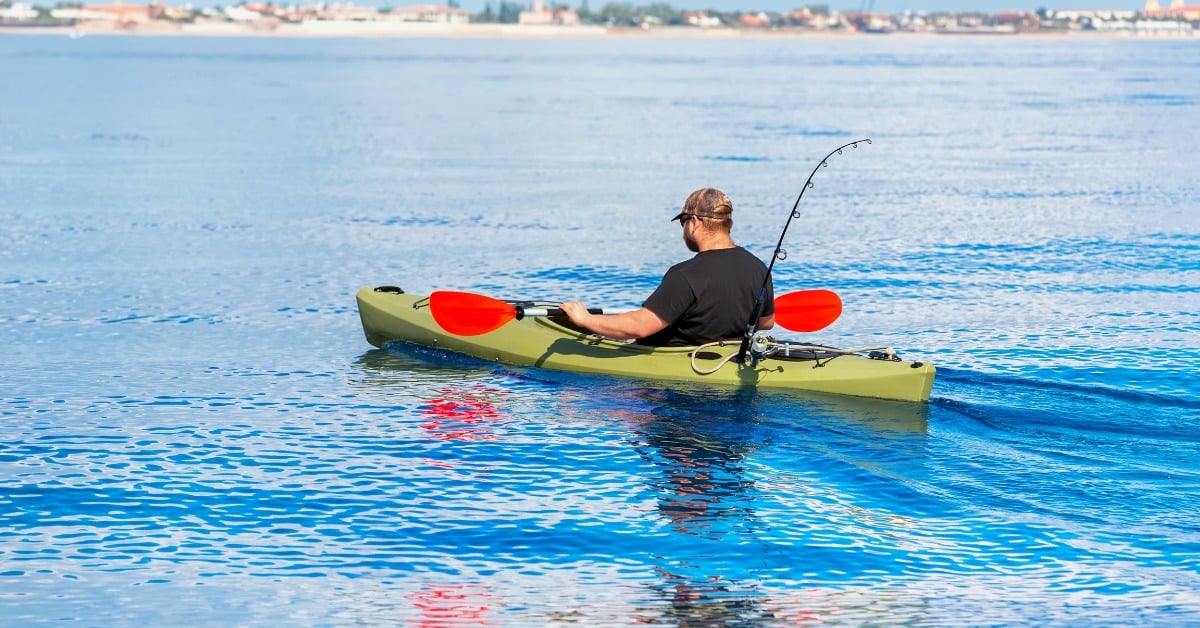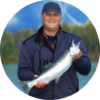I remember seeing Slayer Propel 13 for the first time. Woody Callaway was talking about a kayak at the Outdoor Retailer show. He was doing a video, and in the background was the Slayer Propel 13 that had yet to be released. The video was only up for a short time and was just a teaser of things to come. A few days later, the Slayer Propel 13 was released to the public.
Slayer Propel 13 is a 13′ 2″ kayak that was 33″ wide and had a Propel drive like the Mariner but with new and improved shorter crank arms for better comfort. At the time, I was in a paddle kayak which was not as wide and bulky as the previous peddle kayak I owned. I wanted a kayak that I could pedal and paddle, so the narrower width was very appealing to me.
The Slayer Propels stats had the potential to be the kayak that I was looking for. Fast forward a few months to the day, I was standing in the kayak shop, and the first Slayer Propel hit the floor. We unwrapped it, and the hull was a beautiful dark blue, light blue, and black swirled together.
I considered it to be one of the most beautiful kayak finishes I had seen. Assembling it and getting her lake ready took no time at all. As someone that likes to rig out a kayak, I appreciated that Native had provided tracks to mount gear along the sides at the front, middle, and rear of the kayak.
Also Read
Soon I got to take it to the lake. I assembled the kayak and slipped it into the water. I dropped the propel drive in, and off I went. A huge smile filled my face. As mentioned, my current kayak at the time was a paddle-only kayak. It was one of the best on the market, but I had really missed the convenience of hands-free kayak fishing. I hit the rudder control a couple times and found more than sufficient authority to turn.
After experimenting with the controls and getting a feel for the kayak, the moment of truth had arrived: Stability.
A little background on myself is that I’m not a young teenage buck anymore. To say I have a poor balance is a huge understatement. Watching these young anglers stand up, and fish in the popular kayaks was just a dream for me.
Could I stand in a kayak? Sure! Can I stand and fish? Ha-ha, Not a chance.
I took the new kayak up into 2′ of water so that when I fell out, I wouldn’t have to swim back. I grabbed a pedal and slowly stood up. I rocked side to side and couldn’t believe the stability. Finally, a kayak I can stand and fish out of comfortably.
I pedaled and fished my way back to a shallow creek until it became too shallow to pedal. I pulled up the drive and pulled out the paddle. It had enough rocker that it maneuvered very well in the tight creek. As I paddled it out of the creek, I noticed something I didn’t expect from this kayak. This pedal kayak was paddling as well or, in some cases, better than previous kayak I had owned or demoed.
I paddled out of the creek and found the wind had picked up quite a bit. I fished the shoreline and was being pushed into the bank when I realized I hadn’t used one of the most important features of the kayak yet.
In all the excitement of the performance of the new kayak, I had forgotten it had reversed. So I simply changed the direction of my feet, and back she went away from crashing into the bank. I left that area and headed for better waters to fish. It was a long stretch, and I had time to check out the speed. I paddled at a pretty good pace and saw that my realistic top speed was around 5.3 mph. Pretty good speed, but what impressed me most was the cruising speed of about 3.5 mph.
The effort to maintain 3-3.5 mph was effortless. There seems to be a sweet spot in this speed range where the kayak just settles in and glides through the water. Native Propel Product Manager John Kiffmeyer explains it best when he said they built the drive to run in the 60 RPM range to optimize the hull design and provide a comfortable cruising speed.
I have to tell you I didn’t catch a lot of fish that day. I spent most of the day being entertained with an outstanding kayak. I’ll be the first person to tell you one kayak will not do it all. There are areas that I would like to see improved. Most of them are simple modifications that anyone that can turn a screwdriver can make.
The largest improvement I would like to see is a flip-up rudder. But even with these possible improvements, this kayak has me more excited than any has so far. It’s a pedal kayak that paddles as well as most paddle kayaks on the market. It has more stability than any paddle kayak I’ve been in and does it with a 33″ width. It has forward and reverses and is the most versatile kayak I’ve had the pleasure of taking a ride in.
After riding in Native Watercraft kayaks for a while, I was impressed with their performance and quality. When the Slayer Propel came out, I became extremely excited about the versatility and potential of this kayak. So much so that I have since accepted a position on the Native Watercraft Pro staff. The feedback from their customers has a great impact on their future designs. Feeling fortunate to see behind-the-scenes interaction between Native, their customers, and Pro Staff gets me excited to think about what the future holds for Native Watercraft.






